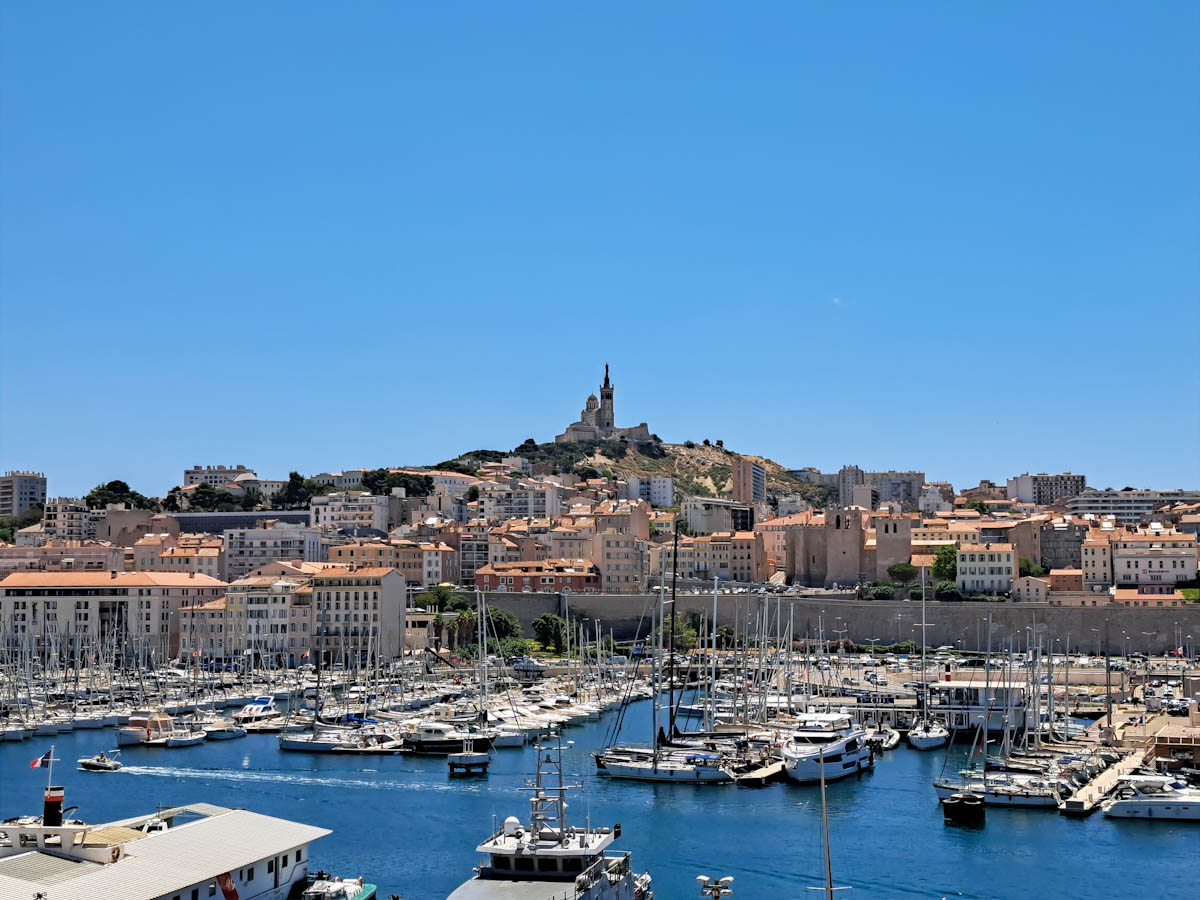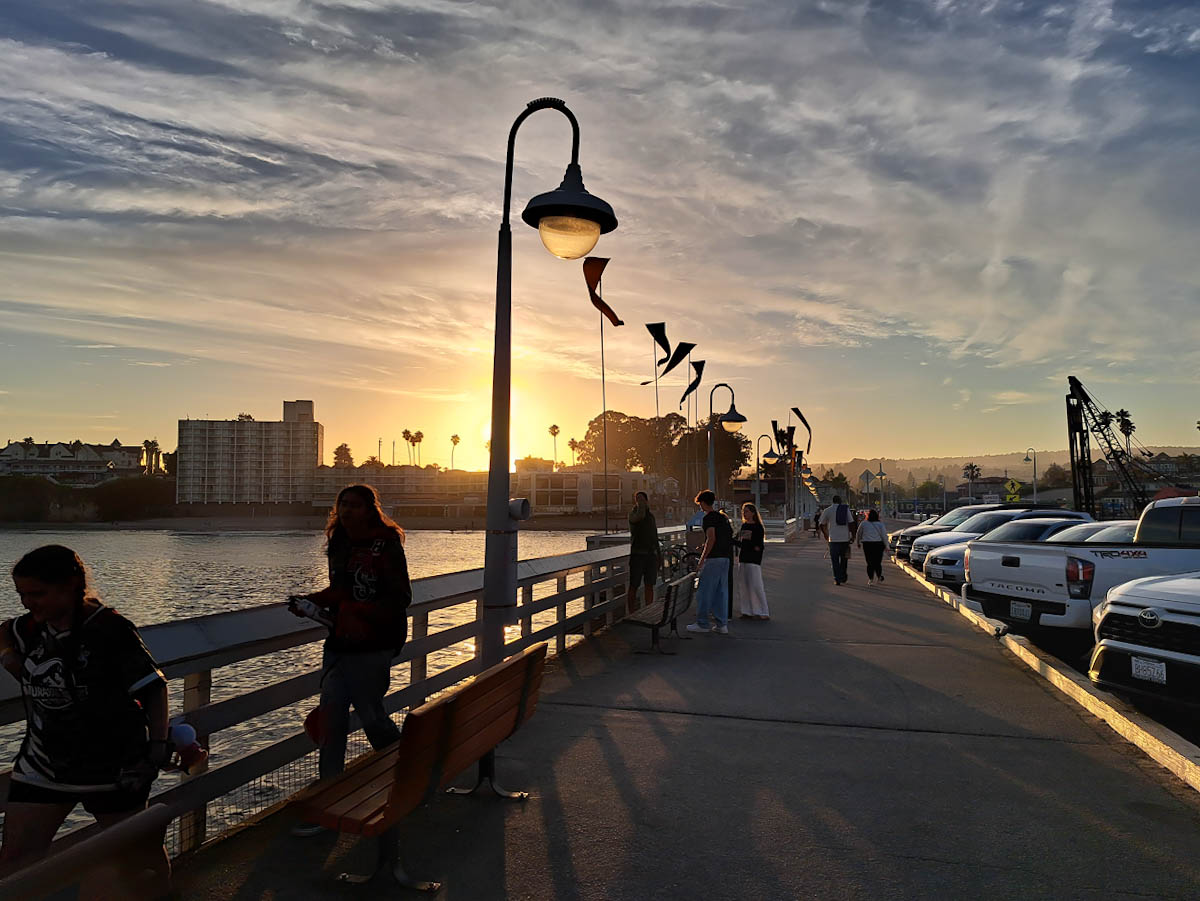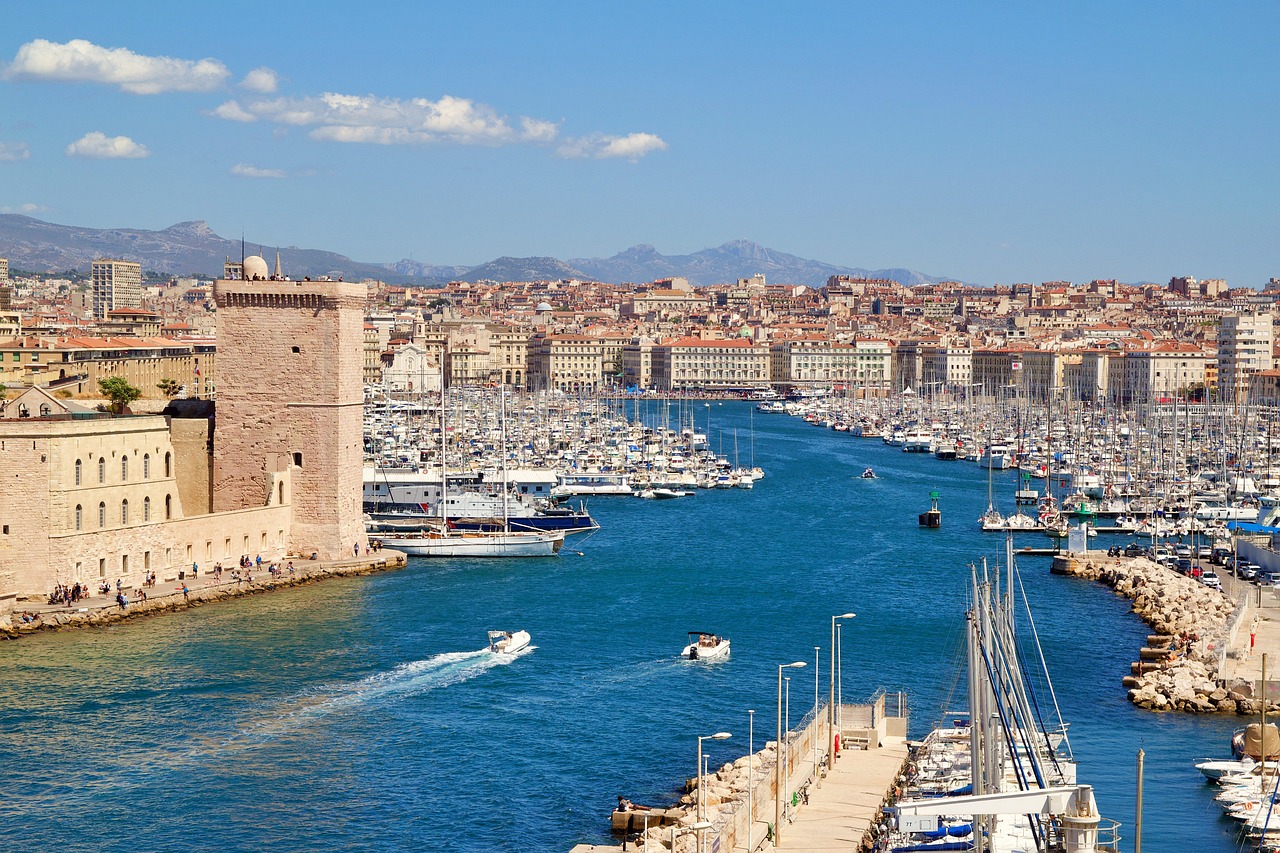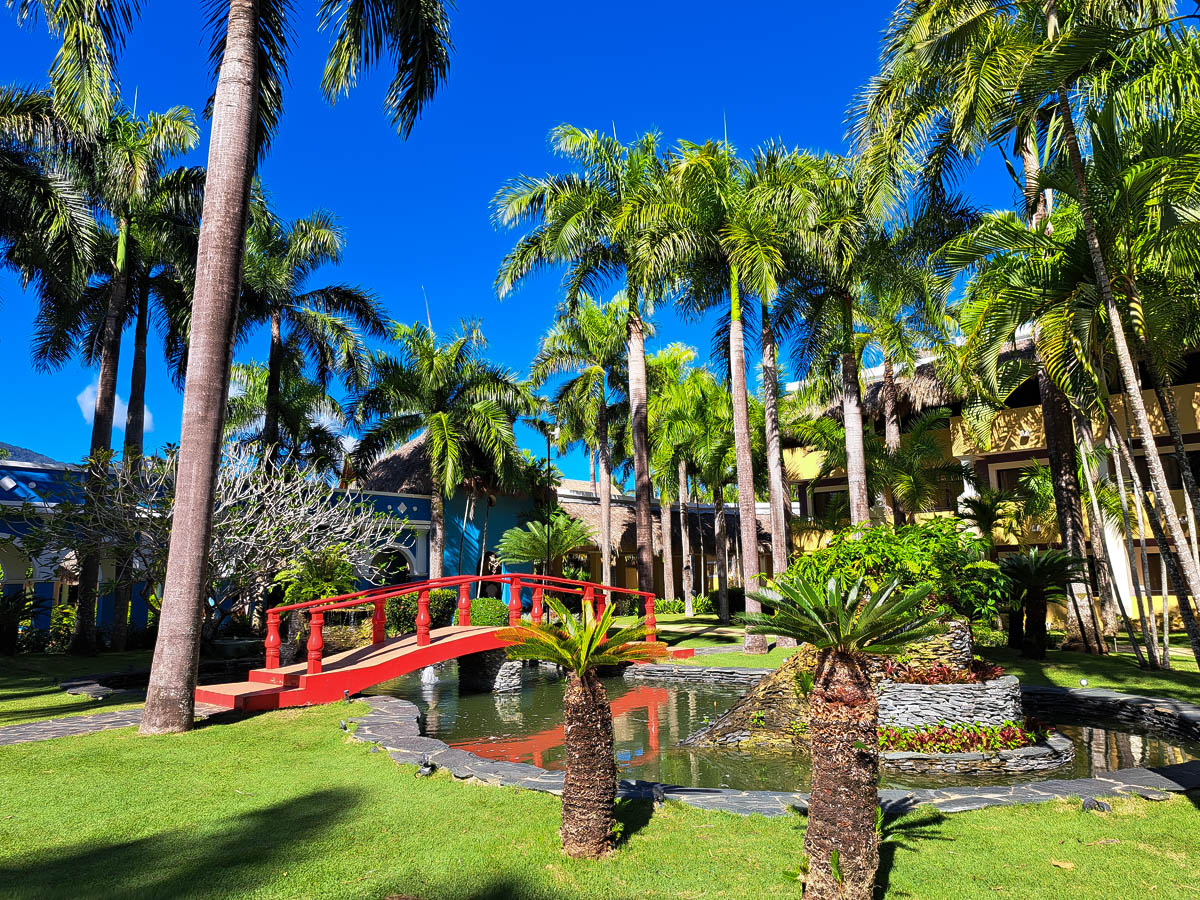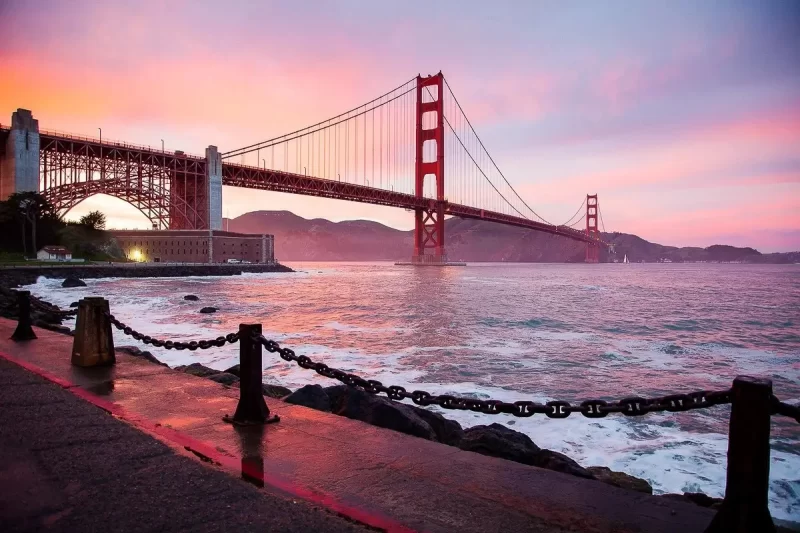Whether or not Marseille is worth visiting is up to debate. Marseille may not be the first place one thinks of when planning a trip to France. Paris is obvious. Nice is beautiful. There are several regions famous for their wine. Stunning natural landscapes and architecture throughout the country.
Marseille, despite being the the second largest city in France, is often overlooked. But it shouldn’t be. And we will tell you why.
No matter where you are traveling from, what kind of trip you are on, or who you are with, Marseille has something to offer for everyone.
Marseille Overview
It’s the oldest city in France with more than 1500 years of history. This is reflected in part by the city’s stunning architecture. The abundance of historic buildings includes magnificent churches, cathedrals, and other popular sights.
It’s a multicultural and diverse city. In 2013 it was chosen to be the European Capital of Culture (2013 just so happens to be the year I first visited). It has the most museums in the country, second to Paris. In addition to a thriving arts and music scene.
Marseille is on the water, serving as a busy maritime hub and port city. The city is known for its fresh seafood. It’s the capital of bouillabaisse, a traditional Provençal fish soup.
It may not have the iconic status of Paris. The romantic allure of the French Riviera. Or the spectacular landscapes of other regions in France. However, Marseille has a unique gritty charm you need to experience to appreciate.
Below are the top attractions and sights that make Marseille worth visiting on your next trip to France.

Top Marseille Attractions and Sights
- Looking for more practical information essential to know when visiting Marseille? The majority of what we covered in Practical Information Essential For Planning a Trip to Paris in 2024 applies to Marseille as well!
Basilique Notre Dame de la Garde
Arguably one of the most beautiful buildings in Marseille is the Basilique Notre Dame de la Garde. This stunning cathedral sits on a hill overlooking the city. It was completed in 1864 on the foundations of a 16th century fort, which was an enlargement of a 13th century chapel. Built in a Roman-Byzantine style, there are multicolored marble and stone, mosaics, and murals throughout.
La Vieux Port
The iconic Vieux Port, or Old Port, is the focal point of the city. Since ancient times, it has served as a bustling hub, playing a key role in Marseille’s development. The area is rich in cultural and maritime history.
Nowadays, it remains a vibrant, dynamic, and scenic part of Marseille. Charming cafés, restaurants, and food stalls line the waterfront. There is ample shopping with unique boutiques. And it’s home to several iconic attractions as mentioned below.
Fort Saint-Jean
Located in the Vieux Port, this historic fortress has guarded the harbor for centuries. It was originally built by King Louis XIV in the 17th century. It showcases Marseille’s maritime history and heritage. And offers great views of the Vieux Port, the Mediterranean Sea, and the city.
Fort Saint-Jean now houses the Museum of European and Mediterranean Civilizations (MuCEM).
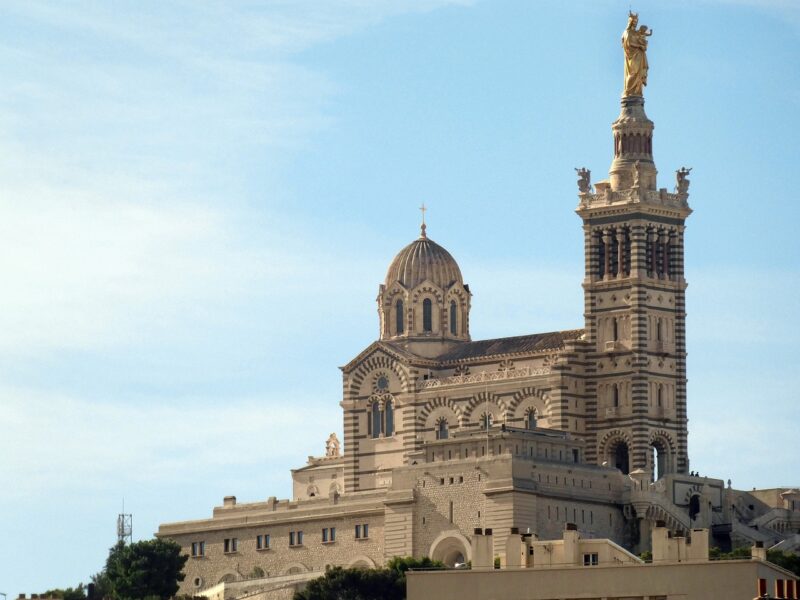
Museum of European and Mediterranean Civilizations (MuCEM)
MuCEM is a renowned modern museum dedicated to the history and culture of the Mediterranean region.
Next to MuCEM is the unique looking La Villa Méditerranée, a large multipurpose building. The building design symbolizes different interactions between the city and the sea.
Cathédrale de La Major
Next to the MuCEM building and the old Fort Saint-Jean is the Cathédrale de La Major. This Roman-Byzantine style cathedral is a beautiful contrast with the modern buildings. The architecture consists of alternating green and white stones, bell towers, and domes. The design is meant to echo the city’s multicultural reputation.
L’Ombrière de Norman Foster
When exploring the Old Port, it’s hard to miss L’Ombrière de Norman Foster. It is a polished steel canopy reflecting visitors walking underneath designed by Norman Foster. Essentially, a mirrored-ceiling shelter, located right on the water.

Abbaye Saint-Victor
This former abbey was founded during the late Roman period and named after the local soldier saint and martyr, Victor of Marseilles. Under the Roman Empire, the site of Saint-Victor Abbey was first a quarry, then a Christian necropolis.
Jardin des Vestiges and Port Antique
The Jardin des Vestiges is a garden containing Greek archaeological remains of the ancient port.
Château d’If
Château d’If is an old island fortress just off the coast of Marseille. Once a military fortress, it later served as a prison. It is famous for being one of the settings of Alexandre Dumas’s adventure novel The Count of Monte Cristo.
Palais Longchamp
This stunning palace is a masterpiece of neoclassical architecture featuring a grandiose façade, majestic columns, and ornate sculptures. It was built to celebrate the completion of an 85 km long canal bringing drinking water into Marseille.
In addition to admiring the beautiful building you can visit the botanical gardens, the Natural History Museum, and the Fine Art museum.
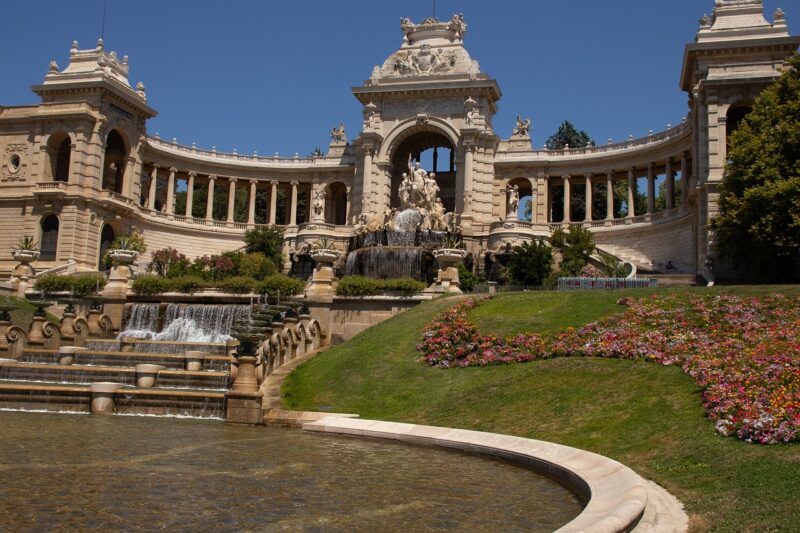
Hôtel Dieu Intercontinental Marseille
If you enjoy admiring luxurious hotels, the Hôtel Dieu is for you. Located in Marseille’s historic Panier district, it was previously a hospital before being transformed in 2013. It boasts French Baroque architecture, touches reminiscent of French Rococo and Neoclassicism, and the Second Empire style.
La Place Castellane
This historic square serves as a symbol of Marseille. The monument includes a 25 meters high marble obelisk. There is a central fountain with four large statues located at the base.
La Corniche
This picturesque seaside walkway meanders along the Mediterranean coast. It starts near Catalan beach, close to the Old Port, and extends to the Prado beaches in the south. Along the way you will pass a small fishing port, cross bridges, frolic through parks and peninsulas, and explore beaches. It also offers stunning views of the Château d’If.
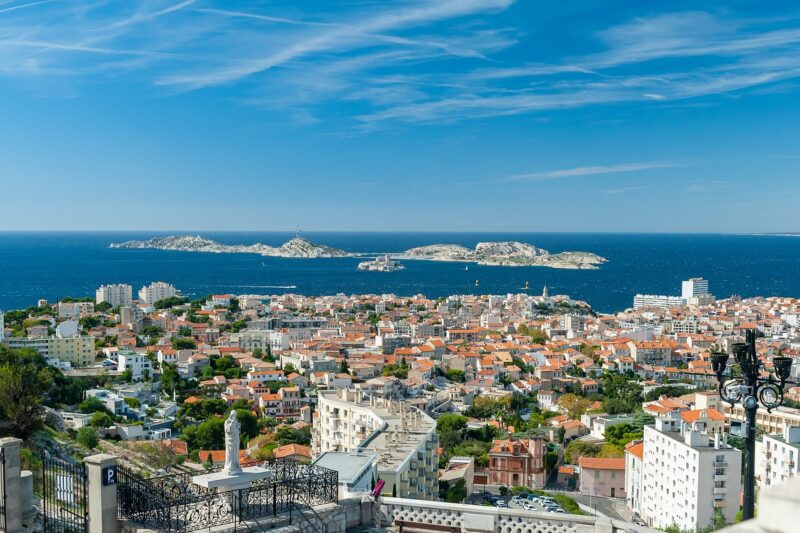
Neighborhoods to Explore
In addition to La Vieux Port, there are several areas in Marseille worth visiting.
Le Panier
The city’s oldest quarter is Marseille’s historical and cultural heart. Le Panier is located on a hill in the center of the city. Colorful, flowery streets give the area much of its charm. Murals and street art help to brighten the narrow streets. Café terraces and boutique shopping line the streets.
La Joliette
Near Le Panier is La Joliette, home to the Cathédrale La Major. The area has become known for its galleries and impressive shopping.
Cours Julien
If you’ve followed us for a while you know we love street art. Cours Julien is the street art neighborhood in Marseille so is absolutely worth visiting! The area has more of a bohemian vibe with great vintage and handmade shopping. There are also several trendy bars and restaurants.
Looking for more information on travelling France? Check out our Paris resources to help plan your trip:



